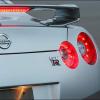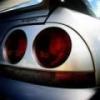R34 Gt-t Turbo Upgrade
Announcements
-
Similar Content
-
Latest Posts
-
roller coaster of a ride. Alarm system was removed & main harness was repaired where possible. still no fix just random successful starts. moved on to the replacing the ignition switch and relay. well all this troubleshooting & repair has been going on, the car is at a paint and body shop being pushed around. Ive been going down there on odd days after work to get it sorted.
-
5th November if you want to come out for a spin wakfield
-
PROBLEM WAS BROKEN COOLANT SENSOR!!! Replaced with a new one and its running mint.
-
I think he was only proposing to use the wire, not the sender. Simply because it runs from the right place to the right place. Personally, I wouldn't hack up the factory wiring like that. I'd just lay in the Defi loom.
-
From memory it wasn't too hard to simply see which wire ran where when you plug that in. Unfortunately also from memory the OEM sender does not use the same configuration 99.9% of gauges run. So in other words if you connect the signal wire that was running to the OEM gauge to your DEFI gauge you might find your oil reads at 200C or some other incorrect value. I remember having the same line of thought and then running new wires/senders to match the gauges I have. The pinout is available in the R34 workshop manual.
-







Recommended Posts
Create an account or sign in to comment
You need to be a member in order to leave a comment
Create an account
Sign up for a new account in our community. It's easy!
Register a new accountSign in
Already have an account? Sign in here.
Sign In Now